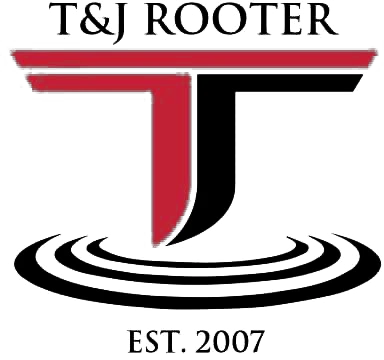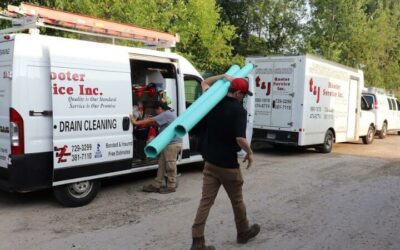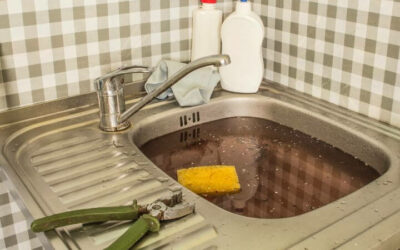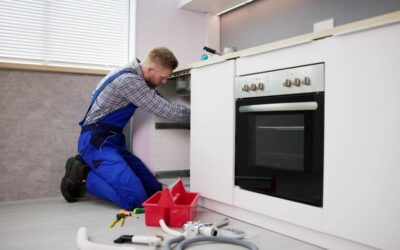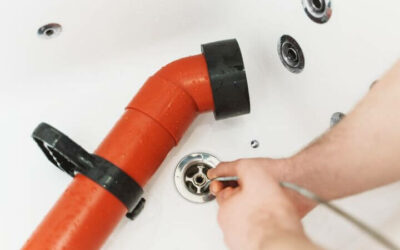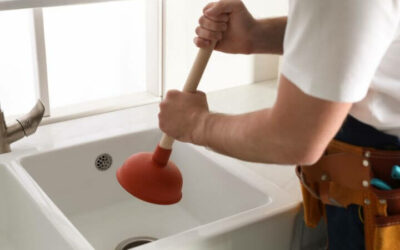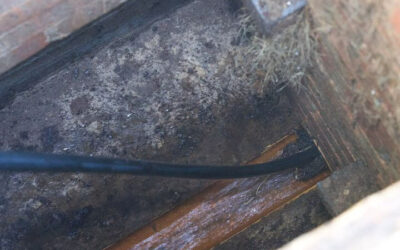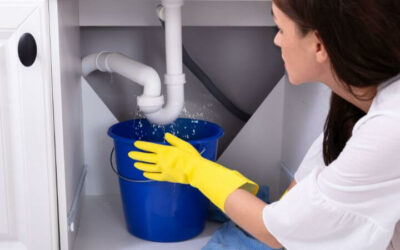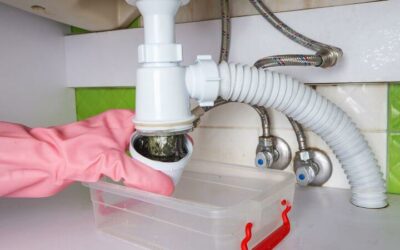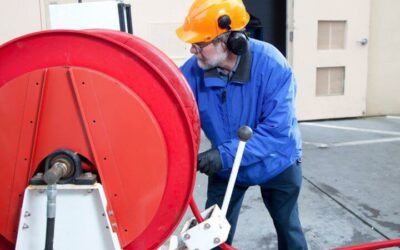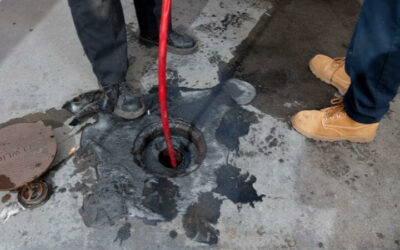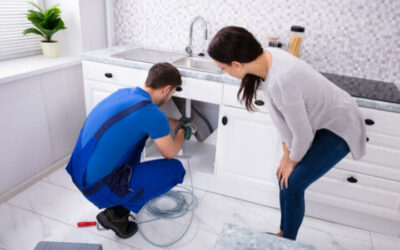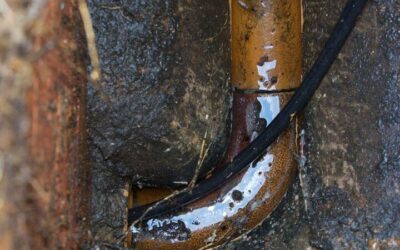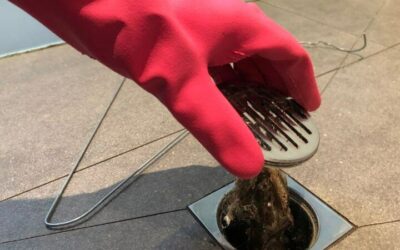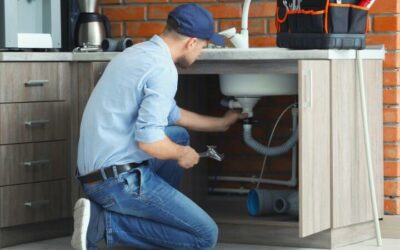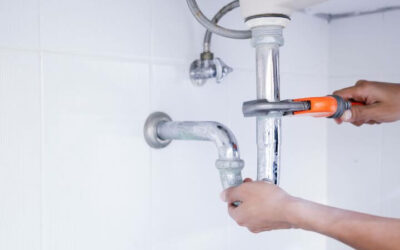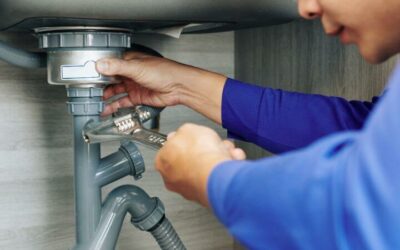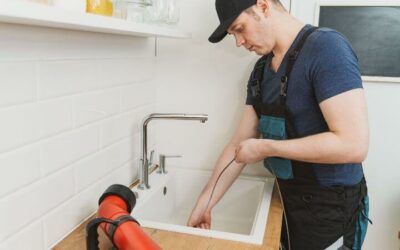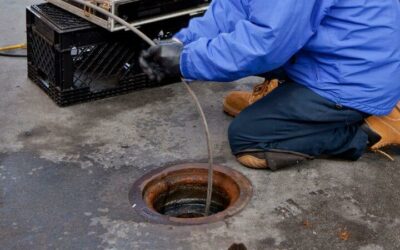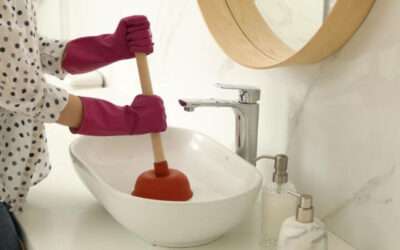In this article, we take a comprehensive look at drain cleaning techniques, with a particular focus on traditional methods and hydro jetting. We’ll discuss the basics of drain cleaning, why it’s crucial for regular maintenance, and examine the pros, cons, methods, and suitable scenarios to use traditional drain cleaning and hydro-jetting. Then, we pit these two techniques against each other, comparing their efficiency, costs, time consumption, usability, and environmental impact. Companies like T&J Rooter Service specialize in drain cleaning, offering expertise in both traditional methods and hydro jetting to keep your plumbing in top condition. To ensure you’re well-equipped to handle any clogged pipes, we’ll guide you on how to choose the right technique. Wrapping up, we’ll peek into the future, discussing all the latest advancements and potential innovations in drain cleaning methods. Drain cleaning is an essential part of maintaining a home or business property’s plumbing system. It generally refers to the process of clearing accumulated debris, including food residues, hair, paper, and other waste materials, from a building’s drains and pipes. This practice is instrumental in ensuring the smooth flow of sewage and water, preventing any potential damage to the property caused by leakage or overflow.
Drain cleaning primarily employs mechanical techniques using specialized tools and equipment. While some methods are simple enough for homeowners to perform independently, more severe blockages often necessitate the skills and experience of professional plumbers. Various types of snakes and hydro-jetting equipment can handle stubborn clogs, while preventive measures such as regular checks and frequent light cleaning can help maintain the health and longevity of your system.
The importance of regular drain cleaning cannot be stressed enough. In its most straightforward sense, regular drain cleaning ensures the effective operation of your plumbing system. Blockages can lead to slow drainage that not only causes inconvenience but can also potentially result in more significant, costly issues if not addressed promptly.
Over time, grease, food particles, and other waste build up in your pipes, gradually reducing drainage efficiency and leading to blockages. Regular drain cleaning works to preemptively eliminate this buildup, keeping your system running smoothly and avoiding future clogs. Using appropriate drain cleaners can also help break down the waste, making it easier to flush out, and they can often even eliminate bad odors.
In addition, regular cleaning helps identify potential problems early. Inspections during cleaning might reveal developing issues with your pipes, allowing you to address them before they become significant problems. This often overlooked aspect of the process can often save you substantial time, money, and stress in the long run.
Finally, regular drain cleaning is relevant to the broader process of home maintenance and can help significantly increase your property’s value. A well-maintained plumbing system is a key selling point for potential buyers and can contribute to a higher property appraisal. In this context, regular drain cleaning is more than just maintenance—it’s an investment in your property value.
In summary, the practice and regular habit of drain cleaning is an essential part of home and commercial property upkeep. Consider adopting a regular cleaning schedule and employing the proper tools and techniques, or hire professional services if needed, to ensure your plumbing system remains efficient and reliable. You’ll be saving yourself potential trouble down the line and enhancing your property’s overall value.
Cleaning Techniques and Tools for Clogged Drains
Drain cleaning relies heavily on mechanical solutions, utilizing a range of specialized equipment to effectively remove blockages.
Drain Snakes and Augers
Drain snakes and augers are the most commonly used tools in clearing clogs. A drain snake, also known as a plumber’s snake or drain auger, is a flexible coil of wire that is pushed down the pipe to break apart and remove the blockage. Some snakes are hand-cranked, while others are motorized for more substantial clogs. These tools come in a variety of sizes, with smaller snakes for household drains and larger, more robust models for main sewer lines.
Hydro Jetting
Hydro jetting is another effective drain-cleaning method that is particularly useful for severe blockages. It involves the use of high-pressure water jets to break up and remove the obstruction. This process not only clears the clog but also cleans the interior walls of the pipe, helping prevent future blockages.
Enzyme-Based Drain Cleaners
Recently, enzyme-based drain cleaners have also gained popularity for their eco-friendly and non-corrosive properties. These cleaners use natural enzymes or bacteria to break down the clog, making them a safer choice for your pipes and the environment.
Regularly using a combination of these tools and techniques can help maintain your plumbing system and reduce the risk of facing a severe blockage. Remember that while these methods can be effective, routine preventive measures are your best defense against clogged drains—regular cleaning and mindful use of your plumbing can save you from needing these interventions in the first place.
When to Call a Professional Drain Cleaner
While many minor blockages can be cleared with basic home tools and techniques, it’s important to understand when to call in a professional drain cleaner.
Signs of a Severe Blockage
Signs of a severe blockage include recurring clogs, multiple clogged drains, foul odors emanating from the drains, and water backups. In such cases, a professional drain cleaner will be equipped with advanced tools and techniques, such as camera inspections and powerful hydro-jetting equipment, to deal with these issues effectively.
The Benefits of Professional Drain Cleaners
Professional drain cleaners not only clear blockages but also provide comprehensive cleaning services that can prevent future problems. They have the expertise to troubleshoot complicated plumbing issues and can give valuable advice on maintaining your system.
While it may seem more costly upfront, hiring a professional drain cleaner can actually save you money in the long run by addressing potential issues before they escalate. It’s an investment in the functionality and longevity of your plumbing system.
The Concept of Traditional Drain Cleaning
Traditional drain cleaning is a service that every homeowner may require at some point. Every day, various materials flow down your drains such as soap residues, hair, food scraps, among others. This can lead to clogs over time, resulting in slow drainage or even a complete blockage of the pipeline. Traditional drain cleaning involves techniques such as plunging, snaking, and rodding, where professional plumbers use manual or motorized tools to clear blocked drains in residential or commercial properties.
Methodology of Traditional Drain Cleaning
The traditional drain cleaning methodology depends on the type of clog and its severity. However, most techniques involve the use of a plumbing snake or a drain rod.
For less complicated blockages, a plunger can often do the trick. The idea is to create a strong suction by placing the plunger over the drain opening and forcefully pumping. This change in pressure can often dislodge minor clogs.
For more stubborn blockages, a plumbing snake may be required. A plumbing snake, also sometimes referred to as a drain auger, is a flexible metal rod that plumbers feed down the drain to reach the clog. The snake can either be manually cranked or motor-powered to break up the obstruction. After this, plumbers flush out the remnants with water.
In cases where the blockage is deep and significant, a drain rod may be used. Drain rods are inflexible poles that can reach further down the drain to clear the blockage.
When to Use Traditional Drain Cleaning
You should consider using traditional drain cleaning services when you notice a significant slowdown in your drain flow, foul smells from your drain, or if you consistently find yourself using a plunger. It may also be useful if snaking the drain does not solve the problem, or you are faced with multiple or widespread clogs in your home.
Another ideal time to use traditional drain cleaning is for regular maintenance. Having your drains professionally cleaned by plumbers on a regular basis can prevent severe blockages over time and prolong the life cycle of your pipes.
Pros and Cons of Traditional Drain Cleaning
Traditional drain cleaning has several advantages. Firstly, it is a tried and tested method that has been used for years with proven results. Additionally, it requires minimal equipment and does not always require the services of a professional plumber – in many cases, a plunger or a simple plumbing snake can handle the job.
On the downside, traditional methods can be time-consuming, especially for complicated or deep clogs. Also, it may not be effective for all types of blockages, for example, those caused by tree roots or solidified grease. Finally, when used improperly or excessively, these methods can potentially damage your pipes, leading to more extensive repairs.
In summary, traditional drain cleaning can prove immensely useful and effective in most cases. However, it is crucial to assess the nature of your clog and the technique to be used for not damaging your drainage system. If in doubt, it is always wise to contact a professional plumber.
An Introduction to Hydro Jetting
Hydro jetting is a powerful method of cleaning and unclogging drains and pipelines. It involves the use of high-pressure water flow to remove build-up and debris in pipes. This method can dislodge and remove not only minor blockages but also major obstructions such as tree roots that can be challenging to dislodge by other traditional methods of unclogging drains.
Hydro jetting involves the use of specialized machines that can deliver water at incredibly high pressures, often up to 4000 pounds per square inch. The high pressure allows this device to slice through any kind of blockages in the pipeline. Notably, the effectiveness of hydro jetting is such that it cleans pipes immaculately, leaving them nearly as good as new.
Principle of Hydro Jetting
Before a hydro jetting procedure is conducted, a plumbing technician will typically conduct an inspection using a small camera. This inspection aims to pinpoint the problem areas and assess the nature and the extent of the blockage.
The working principle of hydro jetting is relatively simple yet effective. The plumbers insert a hose, which is connected to a water tank, into the pipe. As water gets released at high pressure, it dislodges the debris, grime, and build-up that is clogging the pipes, flushing it out through the system.
When to Use Hydro Jetting
Hydro jetting is an excellent tool to use for routine maintenance of your plumbing system, keeping your pipes clean, and preventing clogs from building up. It is also recommended in instances when conventional drain cleaning methods prove ineffective.
In general, hydro jetting can be used in the following instances: when there’s a slow or non-moving drain; if multiple drains are clogged at the same time; if there are recurrent clogs; if the blockage is located deep in the system; or when there’s a sewage backup. Also, in cases of serious blockages like tree roots, hydro jetting presents a powerful solution.
However, it should be noted that while hydro jetting is effective, it is not suitable for all situations. It is not recommended for weak or fragile pipes as the pressure could lead to damage. Additionally, only trained professionals should carry out the process to ensure safety and efficiency.
Pros and Cons of Hydro Jetting
Like any technology, hydro jetting has its advantages and drawbacks. Among its benefits, hydro jetting is incredibly efficient in removing severe blockages, it helps to maintain the health of your pipes for a longer period, and reduces the likelihood of future obstructions.
However, there are drawbacks too. It could damage pipes if they are fragile or old, potentially leading to a more expensive fix. It is also a more costly process compared to conventional drain cleaning methods. Moreover, there is a risk if the process is done improperly; it has a potential of not only causing pipe damage but also posing a risk to the operator, which is why it should only be done by trained professionals. In sum, while hydro jetting presents a powerful solution for stubborn clogs, it should be approached cautiously and judiciously.
Comparing Hydro Jetting vs Traditional Drain Cleaning
Homeowners encounter various challenges in their quest to maintain clean, efficient drains. There are different methods to deal with clogged drains, including hydro jetting and traditional drain cleaning. Both methods have their respective advantages and disadvantages, so choosing between hydro jetting and traditional drain cleaning often comes down to the specific situation at hand.
Comparative Analysis: Efficiency of Both Methods
Efficiency is an essential aspect when comparing hydro jetting and traditional drain cleaning. Hydro jetting is a method where water is pressurized and blasted through the pipes to remove blockages. It is highly effective for removing stubborn clogs and also for cleaning the inside walls of the pipes, making future clogs less likely.
On the other hand, traditional drain cleaning methods, such as snaking or rod, are typically less efficient as they may only punch a hole through the blockage rather than completely removing it. Moreover, they do not clean the internal walls of the pipes, making future clogs more probable.
Hence, in terms of efficiency, hydro jetting outperforms traditional methods as it not only resolves the current problem but also takes preventative measures against future clogs.
Comparative Analysis: Suitability and Use Cases
Regarding suitability and use cases, both hydro jetting and traditional drain cleaning methods have their specific situations where they are more applicable. Hydro jetting is more suitable for severe clogs, especially those caused by tree roots, hardened grease, and other tough obstructions. However, it may not be suitable for older or weaker pipes as the high pressure can potentially damage them.
On the other side, traditional drain cleaning methods are less aggressive and therefore are more suitable for routine clogs and maintenance. They are also better for older or weaker plumbing systems that may not withstand the pressure exerted by hydro jetting.
Comparative Analysis: Costs Involved
From the financial perspective, hydro jetting tends to be more expensive upfront due to the cost of the equipment and the specialized training required for the operators. However, in the long run, it could be more cost-effective as it cleans the pipes thoroughly, reducing the frequency of future cleanings.
Conversely, traditional drain cleaning methods have a lower initial cost but may require more frequent cleanings, which could add up over time.
Comparative Analysis: Time Consumption
When discussing time consumption, hydro jetting is generally the faster method because it cleans and clears the pipes in one go. Traditional methods, however, may need to be repeated several times to thoroughly clear a clog and may not always completely clear it, potentially leading to the need for further attention in the future.
Comparative Analysis: Environmental Impact
Considering the environment, hydro jetting is a safer option since it only uses water under pressure and does not involve chemical cleaners. On the other hand, some traditional methods of drain cleaning use harsh chemicals that can harm the environment when discharged into the sewer system.
Overall, both hydro jetting and traditional drain cleaning have their applications and benefits. The best choice often depends on the nature of the clog, the condition of the plumbing system, and the homeowner’s budget and preferences. In some situations, a combination of both methods may be most effective.
Selecting the Appropriate Method for Specific Situations
When it comes to drain cleaning, there isn’t a one-size-fits-all approach. Different situations require different methods. Some methods may not work for certain types of blockages, and some might even worsen the problem if misused. Let’s go through some methods of drain cleaning and analyze the situations where they are most applicable.
Before we break down the different methods, let’s understand a common misconception about drain cleaning. Many people attach a negative connotation to chemicals, thinking they are inherently bad and should be avoided. Although it’s true that harmful chemicals should be used sparingly, we cannot ignore that some tasks cannot be completed without them, such as drain cleaning. Chemical solutions often have the potency to dissolve stubborn blockages that physical methods cannot.
However, it’s essential to use them safely and correctly. This is where experienced professionals can offer invaluable guidance. They can suggest the best method based on the type of blockage, location, and pipe material, ensuring the safest and most effective solution is utilised.
Factors that Determine the Choice of Drain Cleaning Method
Several factors determine the most effective drain cleaning method for a specific situation. These include the type of blockage, ease of accessibility of the blockage, pipe material, and Level of urgency.
The type of blockage plays a crucial role in deciding the method to use. Physical blocks like hair, food particles, or toys require physical extraction, which can be done using plungers or plumber’s snakes. On the other hand, chemical blocks formed by accumulation of minerals over time require chemical solutions to dissolve and clear them.
The ease of accessibility also impacts the choice of the method. If the blockage is deep within the pipe and cannot be physically reached, chemical solutions or hydro jetting become the most viable options.
The pipe material also sways the choice of method. Some chemicals can corrode certain types of pipes, causing more harm than good. Plastic pipes, in particular, are more susceptible to damage from heavy-duty chemical cleaners. As such, other methods such as plunging, snaking and hydro jetting are often preferred for these pipes.
Finally, the level of urgency can also influence the choice of method. If the blockage is leading to a serious overflow and needs to be cleared urgently, faster methods like chemicals or hydro jetting might be preferred over slower ones like snaking.
Professional Advice and Recommendations
While many do-it-yourself (DIY) methods exist for cleaning drains, it’s always best to consult with a professional before deciding on an approach. A professional plumber has the knowledge and experience to assess your situation accurately and recommend the best method.
Professional plumbers can also spot potential issues that may arise from using certain methods. For example, some chemical cleaners can harm the bacteria in septic systems essential for breaking down waste. This could lead to long-term issues even if they help clear the immediate blockage.
In addition, they would also have the necessary safety equipment to protect against any accidental damage or health risks while handling chemicals.
To conclude, selecting the appropriate method for drain cleaning largely depends on the specifics of your situation and seeking professional advice is always recommended. Remember, the goal is not only to clear the blockage but also to ensure that the overall plumbing system remains undamaged and functional in the long run.
The Future of Drain Cleaning: Advancements and Innovations
As our society continues to advance, so do the tools and techniques we use to keep our environment clean and functional. This has significant implications for the world of drain cleaning, where new technologies have the potential to revolutionize the industry. Let’s explore some of these latest advancements and potential future innovations which could make clogged drains a much less significant problem.
Latest Advancements in Hydro Jetting
Hydro jetting, the process of cleaning drains and sewer lines by using very high water pressure to eliminate clogs and blockages, has seen some exciting advancements in recent years. The latest hydro jetting machines are more efficient, able to deliver higher pressure, and are more portable than ever before. These advancements have boosted the power of hydro jetting, making it a go-to solution for difficult, stubborn obstructions that traditional drain cleaning methods may not be able to handle.
Moreover, modern hydro jetting tools are becoming more user-friendly. In the past, it often required substantial training and skill to use these machines correctly, but as these tools grow more sophisticated, they also become easier to use. This means fewer errors, less damage to plumbing systems, and more successful drain cleaning on the first try. Additionally, many of these modern machines come with nozzles that can be adjusted to fit the size of the pipe being cleaned, further increasing their versatility.
Potential Innovations in Traditional Drain Cleaning
Traditional methods of drain cleaning, such as using a plumber’s snake or a plunger, have been reliable means of unclogging pipes for years. However, this does not mean that there’s no room for innovation. Picture a future where traditional equipment is outfitted with cameras and sensors that can assess the nature of a blockage, size of the pipe, and automatically adjust the pressure and techniques used accordingly. This creates a world where self-regulating pipes and drains could reduce the need for manual intervention, or at the least, make drain cleaning more effective and efficient.
In tandem with this, we could see the development of more eco-friendly cleaning chemicals, or even bacteria and enzymes designed to break down common types of clogs without harmful side effects to people or the environment.
Impact of Technological Advancement on Drain Cleaning
Recent technology advancements promise to make drain cleaning easier, quicker, and more effective. For instance, technology like robotic cutters can remove tree roots and hard deposits, reducing the risk of damage and decreasing the amount of time spent on a job. Video camera inspections allow for a more accurate diagnosis and targeted treatment of the problem.
As technology continues to progress, the drain cleaning industry will continue to grow and adapt. Technologies like mobile apps, real-time tracking, and advanced analytics could give homeowners and professionals access to real-time data about the health of a drain system and predict potential issues before they become more serious. Imagine a world where your phone sends an alert that your drain needs cleaning before a clog becomes a problem.
Progress in the field of material science could also lead to the development of new materials for pipes that could potentially prevent clogs or make them easier to clean. Also, the advent of intelligent drain cleaning robots that could automatically navigate and clean a drain system can be a reality.
The intersection of technology and drain cleaning promises to revolutionize this sector, ensuring more efficient, effective, and environmentally-friendly methods for keeping drains clear and well-maintained.
1. What is the core difference between hydro jetting and traditional drain cleaning?
Hydro jetting involves using high-pressure water to remove blockages while traditional drain cleaning usually relies on a snake or cable machine to manually dislodge obstructions.
2. Is hydro jetting more effective than traditional drain cleaning methods?
Hydro jetting can be more effective in certain situations since the high-pressure water can fully clear clogs, rather than just create a passage through them, which often occurs with traditional methods.
3. What kinds of blockages are best addressed by hydro jetting?
Hydro jetting proves most effective in tackling extensive or stubborn blockages, including grease build-up, tree root infiltration, and residue lining the pipe walls.
4. Are there any risks or drawbacks associated with hydro jetting?
While highly effective, hydro jetting can potentially damage old, weak, or fragile pipes, and should therefore often be preceded by a pipeline inspection.
5. Does traditional drain cleaning offer any unique benefits over hydro jetting?
Traditional methods have simpler operations and can be more suitable for smaller, softer clogs or when dealing with delicate, older plumbing systems.
6. Which method, hydro jetting or traditional drain cleaning, is typically more time efficient?
Hydro jetting usually tends to be faster due to its ability to fully clear the line in one go, whereas traditional methods might require multiple attempts.

